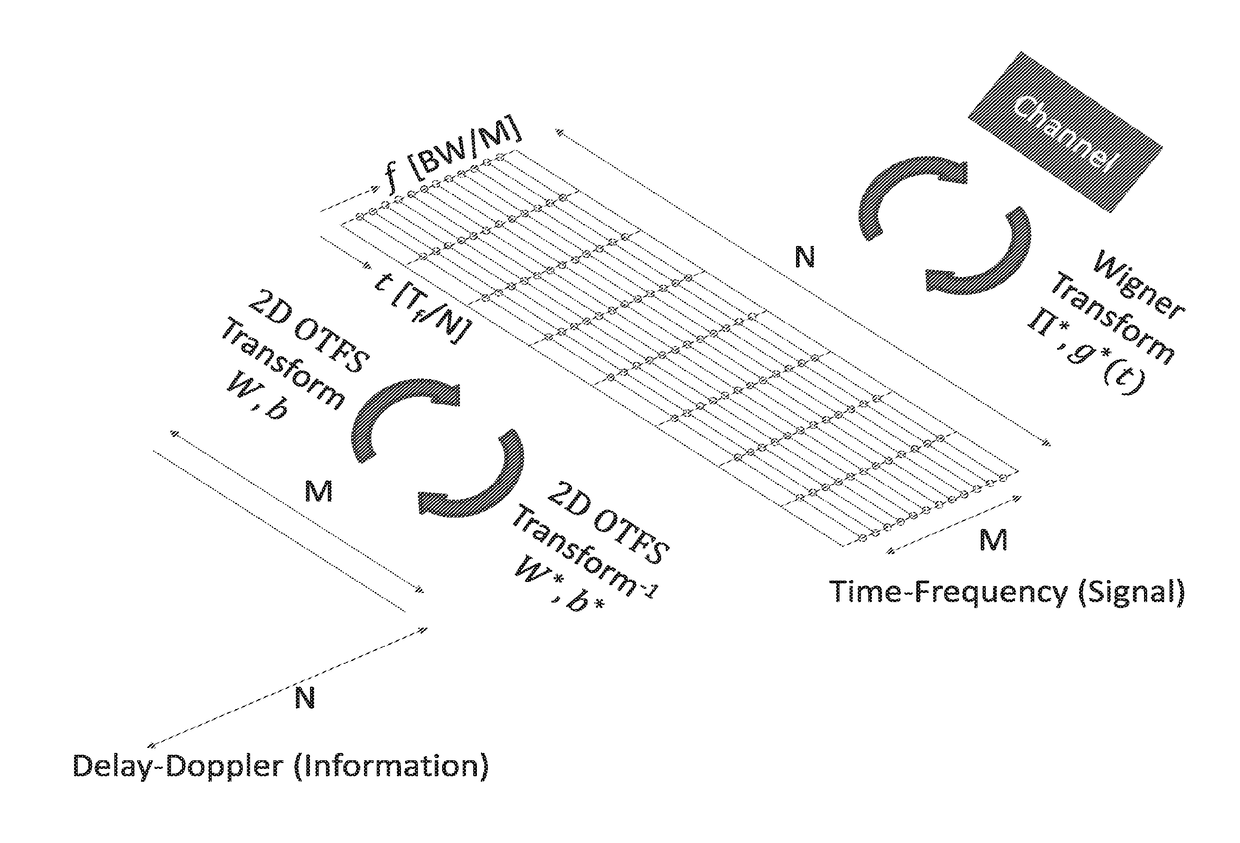Orthogonal time frequency space modulation over a plurality of narrow band subcarriers
a narrow band subcarrier and time frequency space technology, applied in the field of telecommunications, can solve the problems of various time delays and power loss, imperfect data channels, and modern electronic wires (e.g. catv cables), and achieve the effect of substantial economic benefits and reliable and efficient transmission of more data
- Summary
- Abstract
- Description
- Claims
- Application Information
AI Technical Summary
Benefits of technology
Problems solved by technology
Method used
Image
Examples
Embodiment Construction
[0079]Section headings are used in this document to help improve readability and do not limit scope of the technology discussed in each section only to that section. Furthermore, for ease of explanation, a number of simplifying assumptions have been made. Although these simplifying assumptions are intended to help convey ideas, they are not intended to be limiting. Some of these simplifying assumptions are:
[0080]1: Generally we will be measuring and analyzing the channel delay-Doppler impulse response at the same level of time and frequency resolution that we will be using to send OTFS waveforms (which both probe the time delay and Doppler frequency shift of the channel, and which also convey information from the transmitter to the receiver). This simplifying assumption helps make the math calculations easier to understand.
[0081]In this simplified scheme, occasionally the same variable names such as τ and v may be used to describe both the channel delay-Doppler impulse response h(r,...
PUM
 Login to View More
Login to View More Abstract
Description
Claims
Application Information
 Login to View More
Login to View More - R&D
- Intellectual Property
- Life Sciences
- Materials
- Tech Scout
- Unparalleled Data Quality
- Higher Quality Content
- 60% Fewer Hallucinations
Browse by: Latest US Patents, China's latest patents, Technical Efficacy Thesaurus, Application Domain, Technology Topic, Popular Technical Reports.
© 2025 PatSnap. All rights reserved.Legal|Privacy policy|Modern Slavery Act Transparency Statement|Sitemap|About US| Contact US: help@patsnap.com



